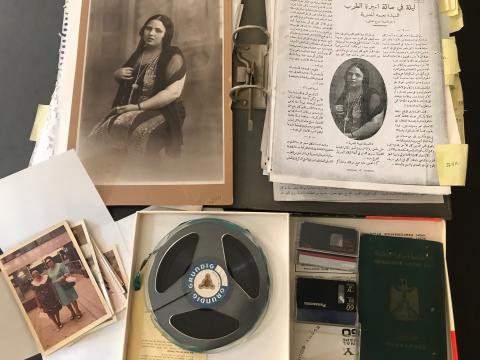
Aims and objectives
The aim of the Jerba Libraries Project was to document and to conserve through digitization several private and public libraries on the island of Jerba (Djerba), Tunisia. The contents vared from medieval manuscripts to early modern documents and early Arabic print books. The texts reflect local and regional book culture, institutional and family histories, as well as the history of the three main religious communities in Jerba: the majority Sunni Muslims, Ibadi Muslims, and its Jewish community. Despite their rich variety and scholarly importance, these collections are today endangered by climatic and human factors. Digitising these texts will offer scholars, local families, and institutions a window into the island’s past and preserve them for future generations. It sought to do so by training local stakeholders in manuscript studies, thereby empowering them to lead this cultural initiative. A secondary goal of the project was to raise awareness in Jerba and among library owners of the importance of the island’s written heritage, which is in danger of being lost due to both human and non-human factors. Finally, a long-term goal of the project was to make the digital facsimiles of all libraries involved in the project available to the global research community via the British Library’s Endangered Archives Programme website.
Outcomes
The Jerba Libraries Project achieved remarkable results in the face of the tremendous challenges presented by the COVID-19 pandemic. Of the original seven collections it aimed to digitise, the EAP1216 team documented and digitized the three largest collections and one additional small family collection, totalling 634 different items and 128,620 digital images:
• El Trouk Mosque Library (August 2019 - June 2020): 168 items (82 manuscripts and 85 printed volumes); 55,627 images
• Chahed Family Library (June 2020 – October 2020): 83 items (5 manuscripts; 75 printed volumes; 3 documents); 25,964 images
• Mhinni El Barouni Library (October 2020- September 2021): 365 items (301 manuscripts; 64 printed volumes): 45,449
• al-Layni Family Library (August 2021-October 2021): 18 items (14 manuscripts; 4 lithograph printed volumes); 1580 images
The age and significance of the materials varied according to collection but in general, the manuscripts date primarily to the 17th to the 19th centuries and were largely produced locally in Jerba or surrounding regions. As such, they reflect local manuscript cultures and the interconnectedness of libraries in Jerba. Many of the same copyists, former owners, and authors of these collections appear in multiple libraries. For example, the El Trouk Mosque Library and the Chahed family library are linked in that
the original owner of the latter was the Imam of the El Trouk Mosque in the first half of the 20th century. Similarly, the Mhinni El Barouni and al-Layni collections reflect the
interconnected history of the Ibadi Muslim libraries in Jerba. The collection of Shaykh Mhinni El Barouni belongs to a famous historical collection of manuscripts collected in the 18th and early 19th centuries by a well-known member of the family, who moved to Jerba in the early 19th century and brought with him a large collection of books from what are today Libya and Egypt. Both the El Barouni library and the al-Layni collection also house early lithograph books, produced by the Ibadi Muslim community of the Maghrib in the print houses of Cairo. Alongside lithographs, the collections each included some early (moveable type) Arabic printed works. These works were by and large produced in Egypt or other parts of the Arabic-speaking lands to the east and their presence in Jerban libraries reinforces the networks of print connecting the island to the broader region in the early 20th century.





